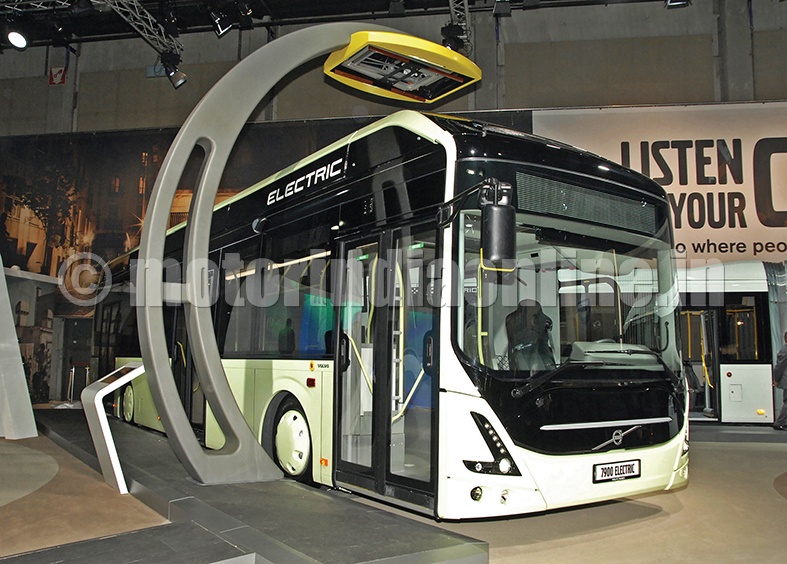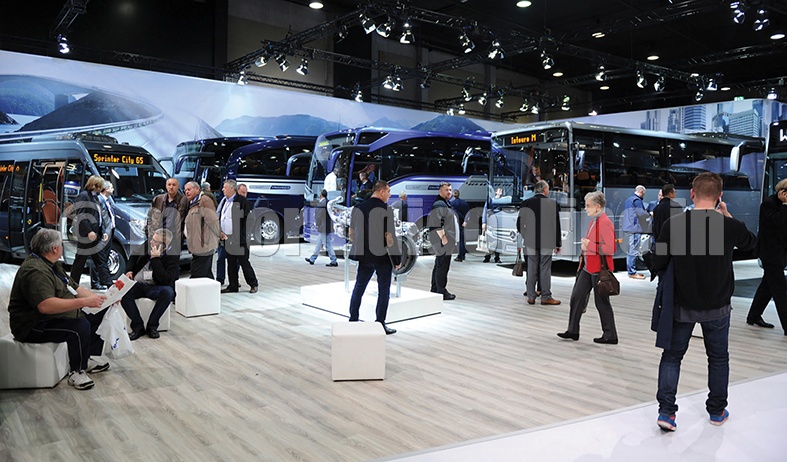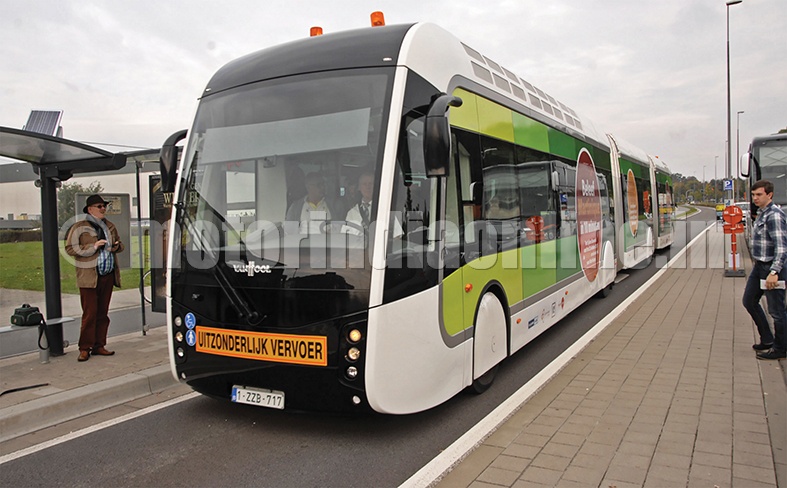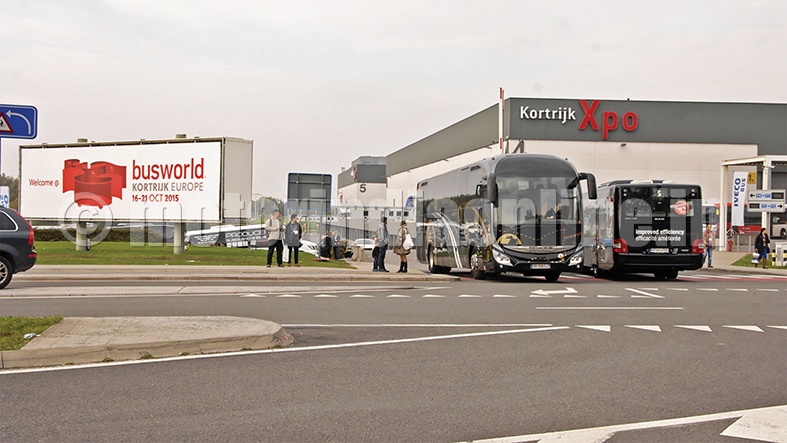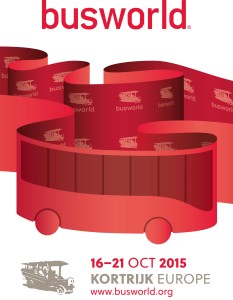 Buses are one of the most cost effective modes of public transport. The next door transport solutions, they offer the quickest and most efficient system for moving people. Buses have evolved over a period of time in terms of comfort, technology and size and are moving closer to nature as well, with zero tail pipe emission. There are numerous auto shows across the globe featuring new technology and ground-breaking products. But if there is only one show for buses which stands out from all others, and that is Busworld Kortrijk.
Buses are one of the most cost effective modes of public transport. The next door transport solutions, they offer the quickest and most efficient system for moving people. Buses have evolved over a period of time in terms of comfort, technology and size and are moving closer to nature as well, with zero tail pipe emission. There are numerous auto shows across the globe featuring new technology and ground-breaking products. But if there is only one show for buses which stands out from all others, and that is Busworld Kortrijk.
Busworld Kortrijk is the largest event where the latest technology, services, and new products for the bus industry are showcased. The 23rd edition of the biannual professional bus and coach exhibition which was held in Kortrijk, Belgium, during October 16-23 proved why it is the best platform for stakeholders in the global bus and coach industry.
Busworld and its heritage dates back to 1971 when the first edition was held. With over 40 years of experience, it is the oldest, largest and most famous bus and coach exhibition. With a humble beginning of 520 visitors, it has grown by leaps to touch nearly 35,000 business visitors this year. In fact, the exhibitor count was only two in its first edition, and now it stands at 411 from 36 countries, including manufacturers, suppliers and service providers from the bus industry.
Most of the important European and global manufacturers of buses, coaches and components having presence in Europe took part in the exhibition which is a one-stop shop for people who are looking for products with latest technology as well. The MOTORINDIA team was present for the complete show, for about seven days, to understand what individual manufacturers have to offer. Almost every major manufacturer reserved a new product to be unveiled, which reflected the quality of visitors and business discussions held at the show.
Furthermore, the 23rd Busworld Kortrijk confirmed the general breakthrough of alternative powertrains. In 2013, this was already tangible, but now almost every vehicle manufacturer presented at least one alternative powertrain vehicle. With a special thrust on alternative fuel and drivelines, all the major manufacturers showcased products with alternative fuels, including all electric, CNG and bio-diesel.
Volvo showcased its all-electric mass-produced 7900 city bus. At the public-transport fair in Milan earlier this year, Volvo Buses unveiled one of the electric concept buses that have been in operation in Gothenburg since this summer. The company took a major step forward and presented its new electric bus, the new 7900, in commercial configuration, ready for the market.
Mercedes world-premiered the Citaro NGT, a CNG-powered low-floor bus powered by a 7.7l, M 936 G natural gas engine. The engine is compact and lightweight and is 25 per cent less in weight compared to a similar diesel engine.
Scania propagated sustainable transport solutions by showcasing its Hybridised Citywide low entry bus with a 320hp hybrid bio-diesel engine.
VanHool premiered the EX series 16H high deck coach with 57-seats capacity. The EX series also has a single axle EX16M 13m variant.
VDL officially presented the Futura FDD2 double-deck coach which is a successor to the VDL Synergy coach. Solaris, the only company to make trams, trolley buses and buses, displayed the Urbino 12 m electric bus which comes with a pantographic charging option.
MAN, which premiered Its Lion’s Intercity at MAN BusDays 2015 in Ankara, showcased the vehicle for the first time at a public show at Busworld. The new vehicle is available in both 12 m and 13 m versions.
Iveco showcased an eye-catching lounge version of the Magelys coach which bagged the ‘International Coach of the Year 2016’ Award. It also premiered the Daily Tourys and the Daily Line Electric.
Temsa, the leading Turkish manufacturer, premiered two new products at the fair. One of them was the MD7 having a 33+1 seat capacity, while the other was the European version of the miracle bus Marathon which Temsa engineers have been working on for a long time.
Chinese major Yutong launched two new bus models with Euro VI engines, specially made for the European market, namely, the ZK6121HQ School and intercity bus and the ZK6938HQ intercity bus and tourism coach.
The latest edition of Busworld also witnessed the launch of Otokar’s 18.75 metre Kent articulated bus. The new high-capacity model holds up to 164 passengers with both wheelchair and pushchair space. Featuring a new DAF engine, an automatic transmission, EBS and ECAS, the bus is also available in an 18 m version.
BYD, the world’s largest electric bus manufacturer, displayed a concept of an all-electric double-decker bus developed for the city of London, to be built in alliance with Alexander Denis. BYD also showcased the largest capacity electric bus – a 150-passenger 18 m articulated bus – and a new to Europe 8 m midibus.
Irizar stole the show with the unveiling of its new high-end Integral coach – the i8. The coach is the sum of multiple technological solutions developed by the Irizar Group and offers detailed aesthetics arising from Irizar’s experience and passion for innovation.
In line with the current developments related to all-electric and hydrid drivelines, suppliers of major systems like doors, climate control solutions, etc., aligned their new products to match these new age buses. The conventional pneumatic doors are being replaced by all-electric doors in which the electric motors help reduce the load on the pneumatic compressors which can now be of smaller capacity just to take care of the braking systems.
Similarly, in climate control systems we could see a shift from the conventional engine-driven compressors to electric compressors powered directly by the battery. With the electrically-controlled compressor and the smaller system size, power consumption is reduced by up to 50 per cent. Moreover, the new air-conditioning system, which can operate while the engine is stopped, will contribute to the widespread use of start and stop systems. Also, engine-powered compressors must be located close to the engine; however, bus cooler systems are usually mounted on the roof, which requires long plumbing to be connected with the compressor. With these new systems, the pipes can be shortened, thus improving the ease of installation and decreasing the weight of the complete air-conditioning system.
On the engine side, Cummins, as part of its SmartEfficiency initiative, launched a new Stop-Start system for its ISB engines, a first on the market, for conventional buses.
ZF presented for the first time the official successor of the worldwide well-established AV 132 – the AV 133 rear low-floor axle for city buses. The trail-blazing axle generation is basically designed for both modern traffic concepts like Bus Rapid Transit (BRT) and the new vehicle generation.
A clear move towards all electric is the major message we take from the latest edition of Busworld Kortrijk. In fact, countries like India which do not have any operational electric buses in public transport are likely to have not less than six per cent of the total volume of transit buses as electric ones in the coming years. Of course, electric buses are still not the perfect solution for long-distance applications, but they can play a vital role in city operations.
It will be interesting to see how the thrust on electromobility in the bus and coach sector would translate into practical solutions as we move forward.
